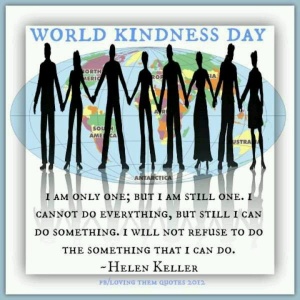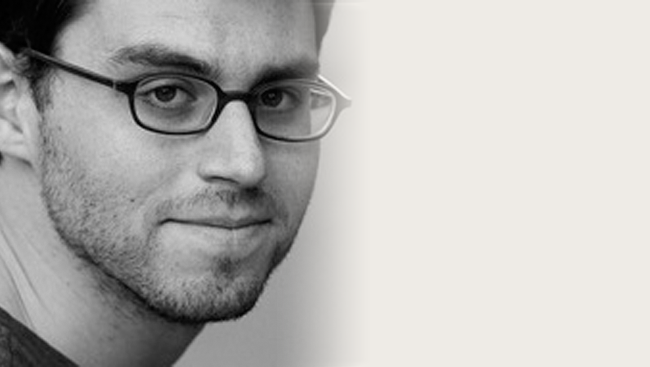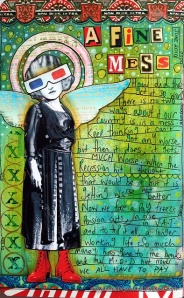I, like many others, have a burning desire to DO something for the world, and I try to do my part every day at work. The last couple of years I have also been reading many books about issues related to the world today, and watched 
 documentaries and movies that also inspired me. After some time, excitement rose as I understood how ideas, psychology and internet have the potential to accomplish things we could not before. Some people say it`s too many bad things out there, we can`t do anything, anyway. I simply believe that is not true. Those words are uttered by bullies not affected by people starving and losing their jobs, as long as they can fly their jets, live in mansions and wear expensive suits.
documentaries and movies that also inspired me. After some time, excitement rose as I understood how ideas, psychology and internet have the potential to accomplish things we could not before. Some people say it`s too many bad things out there, we can`t do anything, anyway. I simply believe that is not true. Those words are uttered by bullies not affected by people starving and losing their jobs, as long as they can fly their jets, live in mansions and wear expensive suits.
From working with traumatized people, some of the most lovely persons I`ve ever met, and feeling the unfairness of people USING their kindness and warmth against them, making them feel bad and unworthy, when in reality the roles could have been reversed. Also reading about how psychopaths can climb to high positions in the society EXACTLY because they don`t fear stepping at toes (Watch the documentary I am Fishead for more on this) scares me even more. But, remembering that just 1 – 2 % of the populations truly have no conscious (still the number is so high that we all will encounter one of them quite often. The staggering number is still big when you think about how many people inhabit this planet. Some have even noticed that capitalism is as built for psychopaths, what do they care if Greece goes bankrupt as long as they get their cash and power?
All this made me realize: People trying to make the world worse, will always be a challenge, but they will NOT accomplish this if others protest. The internet makes this possible, and by spreading an attitude of compassion, we can work against this tendency. In his book, “Defense Against the Psychopath,” author Stefan Verstappen outlines the greatest and stealthiest danger in the human jungle. Leaders throughout history – the people we vote for – are rarely moral leaders. For them, lying is as easy and natural as breathing. It is completely unnerving and rattling to face the fact that someone can have absolutely no empathy. This realization is so frightening, most would rather go heavily into denial and fantasize that our helping them succeed is a good thing.
“Because of the tremendous destruction psychopaths reap on society, it is vital for everyone to be aware of their existence and to recognize their behavior traits. Understanding them is the first step to defending oneself against them.”
Peace one day want to make one day a year, a “peace day”, and what about a “kindness day” ? Philip Zimbardo, one of the greatest scientists, have introduced Heroic Imagination Project where he encourage people to take heroic act. Do you  know that often it is enough that ONE person protest, for others to join in? In fact, they found that the Milgram Experiment of obedience (where you must deliver shock to others) the willingness to do what they “felt” was not right, went down if they “by coincidence” saw somebody else say no. This means: It helps to follow your heart, when something is not “quite right” even if authority tell you something else. Some do anyway, because they trust their gut-feeling enough to do what feels right, but most people look at what others do (cognitive heuristics) because it is easier.
know that often it is enough that ONE person protest, for others to join in? In fact, they found that the Milgram Experiment of obedience (where you must deliver shock to others) the willingness to do what they “felt” was not right, went down if they “by coincidence” saw somebody else say no. This means: It helps to follow your heart, when something is not “quite right” even if authority tell you something else. Some do anyway, because they trust their gut-feeling enough to do what feels right, but most people look at what others do (cognitive heuristics) because it is easier.
So, if somebody else does kind things for others, would you not want to, also? If your best friend always smiled at strangers, would it not be easier for you also?
But you need energy, to be there for others. For that reason: Take care of your own needs first! Many feel egoistic if they do, but it`s actually the other way around. By not taking care of yourself, you neglect the energy and happiness necessary for giving others what they need. If an oxygen mask fall down, take your own mask first. Not because you don`t care about your children, but because then you are more able to help others, afterwards.
Read more:
http://www.5minutesformom.com/67453/world-kindness-day-be-kind-every-day/
Capitalism: A System Run By and For Psychopaths
http://agranstrom.wordpress.com/2013/07/12/the-pros-to-being-a-psychopath
http://articles.latimes.com/2011/may/19/entertainment/la-et-book-20110519
Psychopaths run the world
http://peaceoneday.org/resources/
http://www.guardian.co.uk/books/2012/oct/07/wisdom-of-psychopaths-kevin-dutton-review
http://drawaphy.wordpress.com/2013/07/11/psychopaths/
Related articles
- Developers wanted for Peace Games scheme (develop-online.net)
- Treading the path to peace: London event explores ways of tackling conflict around world (standard.co.uk)
- Welcome to the Muslim Peace Day Project (meccastars.com)
- The Psychopathic Corporation – A Clinical Diagnosis (PCLR), by Dr. Robert Hare (humanchessdotorg.wordpress.com)
- The Psychopath Next Door (dont-tread-on.me)
- Fight for yourself (forfreepsychology.wordpress.com)
- Thoughts from a female psychopath (forfreepsychology.wordpress.com)
- How to spot disorder: Is your ego being inflated? (forfreepsychology.wordpress.com)
- How to protect yourself from a ‘successful’ psychopath (sott.net)


 Even Hillary Clinton seems to think that Huma Abedin should leave. Which is a little ironic, considering she stayed with Bill. Obviously Bill and Hillary had more history when their scandal broke, and they were in different situations, but the real question is this: does Hillary Clinton have a right to make a public statement about what another woman should do in her marriage? In fact, do ANY of us have a right to judge another person’s marriage or relationship?
Even Hillary Clinton seems to think that Huma Abedin should leave. Which is a little ironic, considering she stayed with Bill. Obviously Bill and Hillary had more history when their scandal broke, and they were in different situations, but the real question is this: does Hillary Clinton have a right to make a public statement about what another woman should do in her marriage? In fact, do ANY of us have a right to judge another person’s marriage or relationship?
 Patrick Stewart: Men need to help end abuse
Patrick Stewart: Men need to help end abuse 







 Sometimes scientists believe that mental disorders are based in the brain. They don’t recognize that just because a disorder necessarily involves the brain doesn’t mean that it is of the brain (viz. a brain disorder). Consider: One of the reinforcement schedules that is responsible for much human and non-human animal learning is the so-called
Sometimes scientists believe that mental disorders are based in the brain. They don’t recognize that just because a disorder necessarily involves the brain doesn’t mean that it is of the brain (viz. a brain disorder). Consider: One of the reinforcement schedules that is responsible for much human and non-human animal learning is the so-called